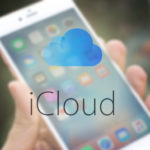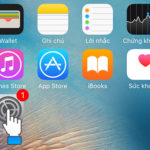Phones are prone to damage after prolonged use. One common issue is known as image retention, which affects your user experience. If your iPhone has image retention, you need to know these tips to fix the issue.
/fptshop.com.vn/uploads/images/tin-tuc/176000/Originals/1.jpg)
Why is your iPhone experiencing image retention?
Image retention on an iPhone’s screen is when an image or a part of the displayed content remains visible even after the original image disappears. This phenomenon occurs when some pixels on the screen do not respond quickly and cannot revert to their original state after displaying a static image for a prolonged period of time.
This condition can happen on an OLED screen or an AMOLED screen when a static image is continuously displayed for a long period of time. The main cause is that the pixels on OLED or AMOLED screens emit light independently, and when a pixel is used excessively compared to the surrounding pixels, it can get “burned” into the screen. When the screen has image retention, the displayed images will still appear as a faint or ghostly image while showing other content.
/fptshop.com.vn/uploads/images/tin-tuc/176000/Originals/3.jpg)
Although this condition does not affect the normal operation of the device and is not a physical defect, it still reduces the display quality and diminishes the aesthetic appeal of the screen. Furthermore, if not addressed promptly, image retention on the iPhone can cause eye discomfort and have a negative impact on vision over prolonged use.
Causes and signs of image retention
Main causes
The main causes of image retention on your iPhone can be attributed to the following factors:
- When an image is displayed on the screen for an extended period of time, the electronic elements on the screen may not immediately return to their original state. This leads to image retention on the iPhone, where previous content still appears as a ghostly image on the screen when transitioning to other content.
- Using the phone in high temperature, high humidity, pressure, or improper lighting conditions can also cause screen image retention. These factors can affect the response of the electronic elements on the screen.
- Some applications or graphic interfaces with static content, such as gaming, video viewing, or web browsing, can cause image retention on the screen when used for a prolonged period. The pixels on the screen may not respond promptly when transitioning to other content.
- In some cases, image retention may be due to hardware defects on the iPhone screen.
Signs indicating image retention on your iPhone
- Faint ghosting: You may see images or content from the previous screen still faintly displayed as a ghostly shadow on the screen after switching to a different app.
- Virtual cracks: The screen may display virtual cracks when content has been displayed for an extended period and when you switch to different content. Virtual cracks may appear temporarily or persistently on the screen.
- Abnormal colors: The screen may display incorrect colors, such as yellow or gray, on previously displayed content.
- Extended images or icons: Images or icons may elongate and reappear in other apps or web pages.
- Rapid image retention: On some devices, image retention can occur quickly, even when an image is only displayed for a short period. This can be particularly noticeable when transitioning from a static image to dynamic content.
/fptshop.com.vn/uploads/images/tin-tuc/176000/Originals/2.png)
How to fix image retention on your iPhone
Avoid displaying static images for too long
Enabling the automatic rotation feature helps change the content on the screen to ensure that the electronic elements on the screen are not in the same state for a prolonged period, thereby reducing the risk of image retention.
Limiting prolonged gaming sessions on your phone can also help reduce the likelihood of image retention. Gaming activities that require the screen to display static content can increase the risk of image retention.
Protecting the screen from direct sunlight and keeping the screen clean are also important measures to reduce the occurrence of image retention. Strong sunlight can affect the screen’s responsiveness, while a dirty screen can increase the likelihood of image retention.
Adjust the screen timeout duration
Reducing the screen timeout duration is an effective measure to prevent screen image retention. By setting a shorter screen timeout, you reduce the duration of displaying static images, thereby reducing the risk of image retention.
To reduce the screen timeout duration on your iPhone, follow these steps:
Step 1: Open the Settings app on your iPhone.
Step 2: Select Display & Brightness.
Step 3: Choose Auto-Lock. Here, you can set the screen timeout duration as desired. To reduce the timeout duration, select a shorter time interval, for example, 1 – 2 minutes. After selecting the desired duration, exit the settings.
Use Dark Mode
Using the dark mode interface is a helpful measure to reduce the likelihood of image retention on your iPhone. Dark mode utilizes darker colors and black on the screen, reducing the level of light and the number of pixels activated compared to the bright interface. This helps reduce the risk of image retention after displaying static images for a prolonged period of time.
In addition to using the Dark Mode feature, you should combine it with other measures such as reducing screen brightness or enabling screen timeouts to eliminate this issue.
/fptshop.com.vn/uploads/images/tin-tuc/176000/Originals/4.jpg)
Set a solid color background
Changing your device’s screen to a solid color background is a temporary measure to reduce screen ghosting. By using a solid color background, the pixels on the screen will be activated at the same time, and no static images will be displayed for a long period, reducing the risk of screen ghosting.
However, using a solid color background may diminish your user experience, as the screen only displays a single color, losing the aesthetic appeal of a diverse interface on your phone.
If your phone screen still experiences ghosting, there may be other factors involved, such as hardware defects, image retention, or other technical issues. In this case, it is best to contact the manufacturer or service center for advice and necessary repairs.
Avoid maximum screen brightness
Using your phone’s screen at maximum brightness can cause several issues such as reducing the lifespan of the screen pixels, generating heat, and depleting the battery faster. Operating at maximum brightness requires more energy from the backlight and LED system of the screen. When the screen operates at the highest level, the internal temperature of the phone can increase, leading to overheating and potentially affecting the lifespan of internal components. Moreover, using the backlight at a high level also consumes more energy, resulting in faster battery consumption and an increased risk of image retention on the iPhone screen.
To avoid these issues, adjust the brightness of your phone’s screen to an appropriate level according to the surrounding lighting conditions. This not only helps protect the screen and prolong the lifespan of your iPhone but also minimizes energy consumption and extends battery life.
/fptshop.com.vn/uploads/images/tin-tuc/176000/Originals/5.jpg)
Refer to the iPhone screen replacement price list
If image retention on the screen continues or becomes severe, consider replacing the screen to avoid affecting your phone usage. Here is the iPhone screen replacement price list (prices may vary depending on the timing):
- iPhone 11 screen replacement: 1,100,000 VND
- iPhone 11 Pro screen replacement: 1,750,000 VND
- iPhone 11 Pro Max screen replacement: 2,200,000 VND
- iPhone 12 screen replacement: 2,400,000 VND
- iPhone 12 Pro screen replacement: 2,400,000 VND
- iPhone 12 Pro Max screen replacement: 2,900,000 VND
- iPhone 13 screen replacement: 3,500,000 VND
- iPhone 13 Pro screen replacement: 6,500,000 VND
- iPhone 13 Pro Max screen replacement: 7,300,000 VND
- iPhone 14 screen replacement: 6,500,000 VND
- iPhone 14 Pro screen replacement: 7,900,000 VND
- iPhone 14 Pro Max screen replacement: 8,900,000 VND
- iPhone 15 screen replacement: 7,500,000 VND
- iPhone 15 Pro screen replacement: 8,900,000 VND
- iPhone 15 Plus screen replacement: 8,900,000 VND
- iPhone 15 Pro Max screen replacement: 11,500,000 VND
Conclusion
Above are all the causes, signs of image retention on iPhones, and effective solutions that FPT Shop wants to introduce to you. We hope that the information provided is helpful, and you can apply these methods to your phone effectively. Best regards!
Guide to Restoring Data from iPhone’s iCloud
With the help of its backup feature, smartphones make transferring data from one device to another and restoring devices to their previous state easy. But have you ever wondered how you can restore backed up data from iCloud to iPhone?






































